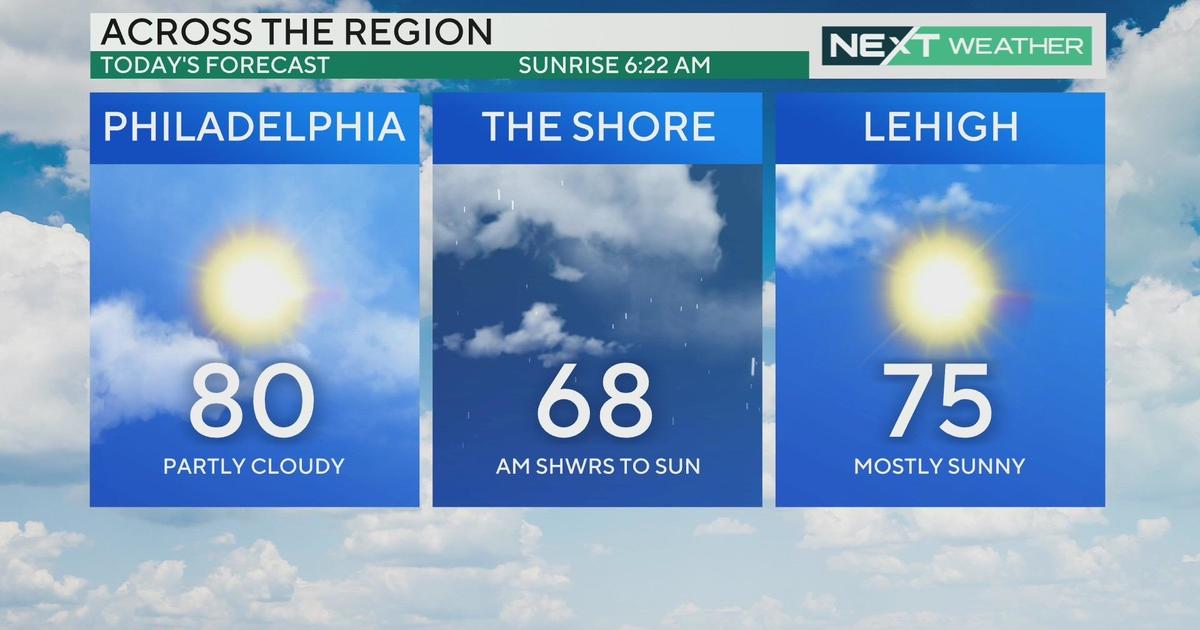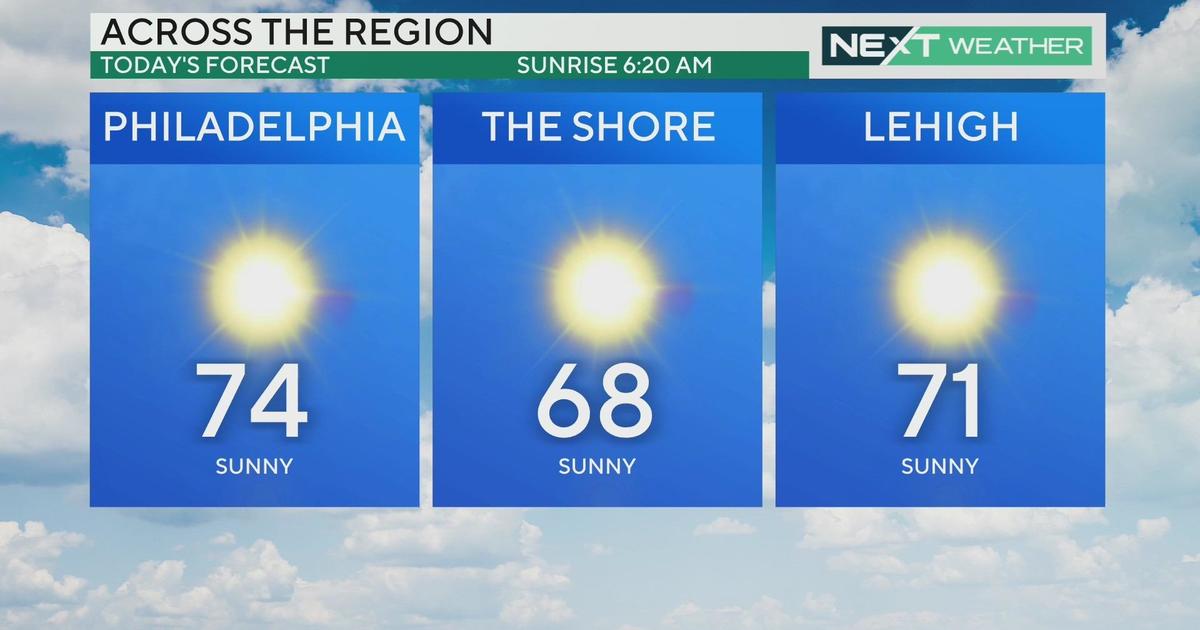Cool Air Invades Eastern US Next Week - Is It The "Polar Vortex"?
By Kate Bilo
PHILADELPHIA (CBS) -- A lot was made about the Polar Vortex this past winter. It gained massive amounts of traction as a hashtag on Twitter and appeared in articles all over the web as a new phenomenon. The only problem with that is that the Polar Vortex has always existed, spinning away in the desolate poles, with nobody really paying it any mind. Until last winter. The Polar Vortex is either reveling in his new-found fame, or shaking it's proverbial head (in a cyclonic motion, no doubt) at the fact that nobody GETS him.
Because, truth be told, the internet got it wrong. The Polar Vortex doesn't INVADE. It doesn't WREAK HAVOC. It doesn't HOLD US IN IT'S ICY GRIPS. It just... is.
But when push comes to shove, I don't get the rage and ire that some meteorologists have over this phrase becoming a buzzword. Sure, it's incorrect, for the most part. But the Polar Vortex does exist, and when people are talking about it, that means they know what's happening. They know that "POLAR VORTEX RETURNS" means that it's going to get really, really, awfully, extremity-numbingly cold. And maybe they will take better precautions against it.
When you hear about the "return of the polar vortex!!!" next week, what is really being said is"the pattern next week is very similar to a pattern we endured last January". That's just not as catchy, is it?
The Polar Vortex is a cyclonic circulation in the polar regions, both South and North. It's formed by the gradient between the cold air in the poles and the warmer air in the tropics and mid-latitude regions, and it's much stronger in the winter when this gradient is more pronounced. The actual Polar Vortex, or PV, is located higher in the atmosphere and simply influences another, more irregular circulation in the poles closer to the surface. This circulation can be disturbed, and these perturbations in the flow can send cold pools of air south with a plunging polar jet stream.
In next week's case, the strong circulation around Typhoon Neoguri near Japan is influencing the weather patterns across Earth's atmosphere, and this is causing an intense ridge to develop in the west (read: hot), and a strong trough to invade the east (read: cold). Temperatures in some cities, like Chicago, Milwaukee, Madison, Sault Ste. Marie and Minneapolis may be a full 20 to 25 degrees below average. We're talking 50s and 60s in mid-July, which the normal highs are well in the 80's. That's certainly significant, much like the similar cold outbreak we saw back in the winter months.
Here in Philadelphia, the cooling won't be as pronounced. Temperatures through the middle portion of next week will be below normal, but most spots will still make it into the 80's, so it's not much to write home about.
So go ahead, use the term Polar Vortex if it touches your soul! Know that it's inaccurate, but it's out there and it's not going away anytime soon.
Must Read Today's Top Talkers



